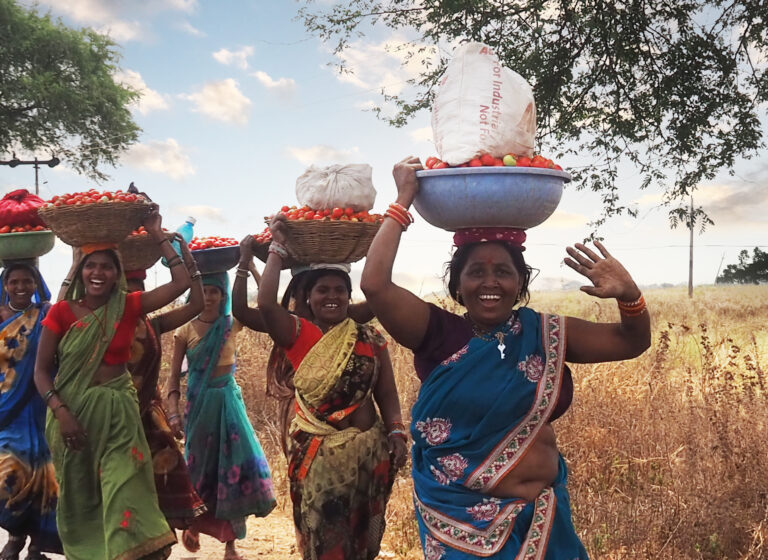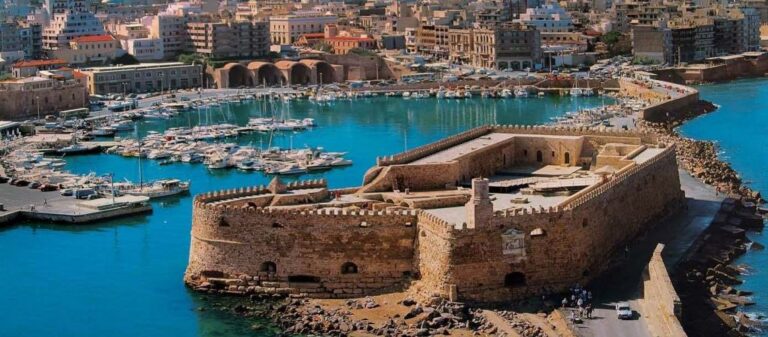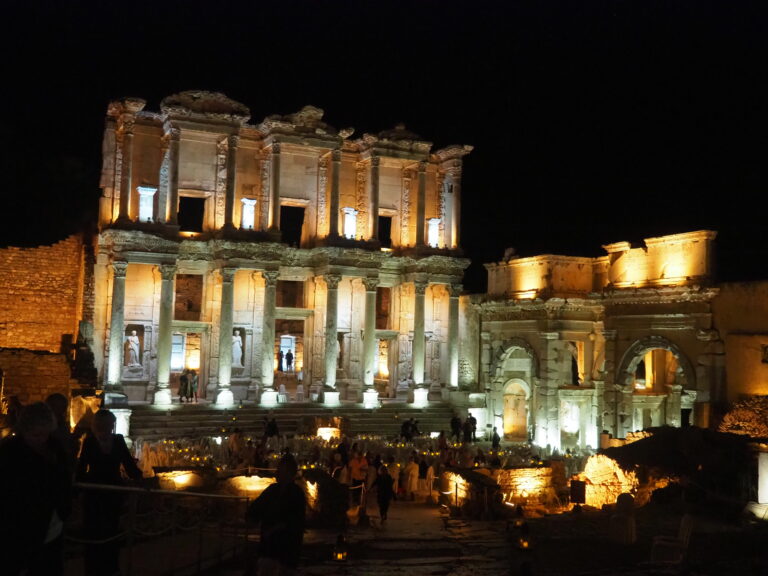Do you daydream about exotic destinations, places you have read about in storybooks but never been able to put yourself in the picture? Try if you will to imagine sitting in the middle of the Sahara Desert under a heavy dark canvas, the sands beneath you covered in mats of beautifully woven thread adorned in colours of the sky, the oasis and the abundant ochre colour of the shifting sands. You smile at a family of Berber men, women and children as they offer mint tea, with or without milk, but loaded with sugar. If you are wondering if the sugar is optional, the best I can offer is a request for a little less than the standard 2 teaspoons full. The midday sun has made an entrance, rising above the massive dunes on the distant horizon. A small herd of camels are close by, not a care in the world for the strangers who have invaded their space, a place that appears to have no beginning and no end. Such is the view of the rolling sand hills laid out before us and the collective introduction to Morocco.
Outside your guide, a Blue Man, laughs raucously as one local man makes what must be a joke in Arabic. Oh, how we would love to know what the joke entailed, or maybe not. Either way, when our guide is asked to comment, he simply shrugs and relays that it would be lost in translation, something to do with little or no sugar I gathered. Such is the day to day existence of the Berber people and their nomadic lifestyle.
The romanticism of a country like Morocco flows from many different corners often depicted in the exquisite architecture. The mosaic designs are harmonious with no one pattern being the same. Complementing the designs with hand-carved wooden doors and railings, the picture begins to reveal itself in the splendour of both colour and design. Many of the buildings we have visited are known as Riads or garden houses, and it is here you will find exquisite examples of Moroccan design. Due to the arid nature of the country, the designers have brought the outside in with this method, guaranteeing that when the day is hot, the occupants can be assured of a cool respite from the outside temperatures. Most will feature a fountain in the central courtyard, some only small with others holding a prominent place of welcome.
Can you see yourself in the image now, or maybe we should start adding to the adventure in the cities and towns, most with romanticism straight out of our story book. It is difficult to say whether Casablanca or Marrakech are viewed as the best place to begin the journey, and though many have glimpsed the images of the ‘Blue City’ of Chefchaouen, there really is no right or wrong answer to this question as each holds magnificent history and vibes that will have you spellbound. I have always been one for a ‘soft’ landing, somewhere you can ease your way into a holiday.
As the largest city in Morocco, Casablanca still has many Art Deco properties from the early 1900’s. It is no wonder it was a popular place for novelists and film makers during that period. Today it is the hub of commerce with a rich history of blended cultures including European, African and Arab and of course Berber.
To dine in Casablanca is to enjoy a flurry of flavours with some of the best cuisine in the country. One must not miss the famous Hassan II Mosque extending outward over the Atlantic Ocean as it gazes the length of the corniche which comes alive in the late afternoon and evenings with many of the bars and restaurants located along this stretch of ocean. Casablanca still holds a feel of mysticism, especially in the Medina.
As we journey south, we follow the path of the spice traders to the fourth largest city in Morocco, Marrakech. Travelling by car takes two and a half hours as we watch the landscape begin to change into rolling hills. Making a stop in Settat to explore the local souk and maybe your first traditional mint tea, is a perfect introduction to the countryside and a more laid back lifestyle. You can be assured that you will be tempted to make a start to your shopping for anything Moroccan.
Known as the ‘Red City’, Marrakech is famous for the Medina and the sprawling souks that will provide any manner of delightful items. If a tajine is on your list, you will find them in many sizes, if colourful bowls are more enticing, there is no shortage of those as well in a myriad of colours and sizes. If by some chance you fall in love with the local mint tea, you will have a hard time deciding on the colourful glasses used to present the beverage. From lights to spices, food to gold jewellery and clothing, you can be assured that you will walk away with something…. or a lot of items that are hard to resist.
Jemaa el-Fna is a hive of activity from the late afternoon. The UNESCO Heritage square will not disappoint. A few words of warning, if you don’t like snakes, run fast from the handlers who will wrap one around your neck before you can protest. Of course they want your money to take it off and the offer of a photo comes at a price. The second trap is the ladies ready to pounce with tubes of henna. It all starts with a smile as they grab your wrist and swiftly start embellishing you with squiggles and swirls. No matter what you do or say, they will not be deterred, and whatever you offer, the money will not be enough. There will be close to a tantrum as they profess an insult at your offer. You can dive down one of the lanes in what is a labyrinth to be explored, to escape if you are quick. In the evening you will have no shortage of entertainment from storytellers and dance performances, to food stalls offering amazing dishes.
Marrakech features many beautifully crafted buildings. Koutoubia Grand Mosque can be entered at no charge. The stunning 16th century Madrasa Ben Youssef, a prayer hall and college has a small entry fee. With so many remarkable places to see, you will need at least two or three days in the city. This can be a great place to do a camel trek through the close by desert of Agafay. Quad biking is very popular so make sure that you have this included in your insurance before you leave home as some may not cover this activity. One of my favourite inclusions on our journeys is that of a cooking class. LA MAISON ARABE and NELIA are but two of the many on offer.
With the ochre desert sands, it can be easy to think that this is the feature of the buildings both outside and in. Exteriors however can be deceiving. Inside you will be transported into another world entirely, one of pastel colours in exquisite mosaic designs. Visiting the remains of the 16th-century El Bardi Palace gives us a strong glimpse of the regions past while providing you with stunning photos. If you can manage sunrise or sunset your shots will be even more spectacular.
As our journey and exploration continues, maybe you are starting to take on the guise of a past desert wanderer with the temptation to wrap yourself up in one of the colourful fabrics being irresistible.
Our dream is no longer a fantasy but a reality as we travel south to the movie capital of the country and one of my favourite desert cities, QUARZAZATE and AIT BEN HADDOU.To reach both destinations is an adventure in itself as we travel through the Tizi N Ticha Pass at an elevation of 2,025 metres in the High Atlas Mountains. The scene that unfolds before us is breathtaking as we glimpse the switch-back road winding tightly as it hugs the barren landscape. Quarzazate is nothing short of remarkable when we consider that it has stood for centuries as a trading route from central Africa to the coast. Located on the edge of the Sahara Desert, it appears to have been made completely from the desert sands as the city blends seamlessly into the surrounding hillscape. Local guides love telling the stories of the original inhabitants, the Berber tribes whose descendants are the current lodgers today.
One of the main attractions, the Atlas Studios, will immerse you in the ‘make believe’ world of the rugged and romantic, the fantastical and historical bygone era. Lawrence of Arabia was filmed here at the entrance to the Sahara Desert, while scenes from Game of Thrones, Gladiator and Star Wars were brought to life in the studios. Opening in 1980, it earned the name ‘Hollywood of the Desert ‘. Entry to the studio will cost 80 Dirhams local currency or around $8 USD.
Close by is the fortified city of Ait Benhaddou, a UNESCO World Heritage listed destination since 1987. The earthen Ksar – a group of smaller dwellings within fortified walls – is located in the Ounila Valley and has also featured in movie scenes, most notably Gladiator and Game of Thrones.
The well-known ‘Road of a Thousand Kasbahs’ leads us to the town of Skoura and another earthen residence, the Kasbah Amridil. The Kasbah is a living museum with generations of the Nissiri family having lived here for over 300 years, very little has changed in that time. The olive press could have been plucked out of a time machine with the bread oven still emitting the aroma of warm bread on the rise. Designed more for day visits than overnight stays, it is still possible to find a bed in the only local hotel outside the walls of the town. While this Kasbah holds our interest, there are so many in the region that you would need longer than a night or two to visit them all.
As we do our best to brush the golden sands from our clothing, we are now on our way North to the city of Meknes. There is an aura that surrounds this 11th century military settlement. One only needs to close their eyes, absorb the aromas as they drift slowly through the air, to imagine stepping back to the very origins of Morocco. Once considered to be the capital of the great Berber tribe known as Meknassa, the nine monumental gates are an indication of the size of the fortification.
One of the most adorned gates is that of Bab Mansour. The mosaics of blues and creams seem to pull the colours of the sky even closer. The imposing doors exemplifying the grandeur of the Hispano and Moorish styles are not lost on photographers, it is just a matter of what angle will capture the elegance. Inside the high walls you will find 25 mosques, an indication of the size of the UNESCO city. Imbued with lush gardens and many fountains, the importance of bringing an oasis to the middle of the desert is well noted.
Meknes is on the threshold of the famous Roman ruins of Volubilis noted as Moroccos most important archaeological UNESCO site. At the height of its popularity, it was a thriving Roman city. Today it is reasonably well preserved with evidence of the Triumphal Arch, Basilica and Roman baths. It is the mosaic floors, not dissimilar to those throughout the ancient worlds of Pompei, that catch your eye. The city was abandoned by most of its inhabitants in 285 AD due to its remoteness and inability to protect itself from Berber attacks. It is slowly being restored after much was destroyed during earthquakes and thousands of years of eroding winds.
Known as the cultural and spiritual capital of Morocco, Fes –or Fez, is our next destination. As with many of the old medinas in Morocco, Fes is another UNESCO Heritage listed site. One of the most notable features as you meander around the city is the distinct odour of the tanneries. This is where a light scarf is a handy thing to have on your person, it is extremely strong and may upset some noses. The dying process however is well worth the discomfort. Best viewed from a higher building, the vats displaying many different colours, are in abundance.
The importance of Fes cannot be dismissed with a cultural immersion of the deepest importance. The medieval Madrassas or religious schools, showcase the magnificent craftsmanship and stunning architecture of their time. Fes el Balis the maze like medina, is not only colourful, it exudes rich traditions of the past. The souks are lively and an experience in their own right as the voices of the stall holders carry through the narrow winding alleyways. Brass, pottery and leather goods are all of the highest quality and very hard to resist. Again we are presented with an imposing gate to frame the old medina. Bab Bou Jeloud or the Blue Gate, stands tall signifying the prosperity that Fes is noted for. Morocco Tourism refers to Fes as the Imperial Pearl and for good reason. In complete contrast, the city is also known for football and golf which may seem odd as Fes is also a popular entry point to visit the Erg Chebbi Dunes of the Sahara Desert.
Our next day begins with a three and a half hour journey to the ‘Blue City’ of Chefchaoen. Located in the Rif Mountains north-west of the country, the city is known for the blue washed buildings throughout the old town. The steep cobbled lanes are popular with photographers who will wait hours for just the right light as the sun moves across the mountains. If you travel there during peak season, it can be hard to take the right shot with hundreds of tourists moving through the narrow streets. The 15th century fortress and dungeon in the Kasbah is located in the main square and a good place to stop and reflect with another cup of mint tea or a local coffee. Depending on your arrival time into the city, one night is enough unless you wish to experience a cooking class in which case a second night would be a good option.
Evidence that time changes everything. The capital Rabat is our next and last stop and we have noticed immense differences since our first visit. The super highways, modern bridges with steel spans and fancy shopping centres are evidence that the country will not be left behind in the expansion of its prosperity. The heritage reflects a strong connection to their Islamic and French colonial past. Bordering the Atlantic Ocean and the Bouregreg River, Rabat still holds true to a strong faith with prayers from the Imam or muezzins echoing from the minarets throughout the city five times a day.
You should not bypass Chellah, the famous medieval Muslim fortified archaeological necropolis first founded around the first millennium BC. Rabat has much to offer including the Hassan Tower, the Royal Palace and Kasbah des Oudayas , the 12th century Almohad Citadel. I have only touched on a small portion of this dynamic country with places like Tangier, the gateway to Spain, and the port city of Essaouria, located on the Atlantic Coast, a favourite for windsurfers and kitesurfing, yet another UNESCO designated region well worth taking the time to explore.
Travel with us to Morocco to experience the gastronomy for which the country is well noted. There are now 15 restaurants in Morocco listed amongst the 1000 best in the world. Taste some of the pastries and Tajines with us throughout your journey. Spices that will captivate you include Ras el Hanout – ‘Top of the Shop’ – containing rose petals and a blend of cinnamon, saffron and cumin. These are just some of the playful flavours used in Moroccan cooking. Do join us.



